While they struggled through the first three and a half months of the season, the Pittsburgh Penguins remained close enough in the postseason race that it wasn’t too late once they started to pile up wins. With just four games to go in the 2018-19 season, they’re poised to make the playoffs for a 13th consecutive season, barring some worst-case scenarios going against their favor.
Clinging to their playoff lives after suffering a late third-period meltdown during the Feb. 23 Stadium Series against the Philadelphia Flyers, the Penguins have taken their play up a notch since their first post-deadline game on Feb. 26 against the Columbus Blue Jackets. Their 10-3-3 record since has vaulted them into a divisional playoff spot and made their early struggles a thing of the past.
As of March 30, the Penguins sit third place in the Metropolitan Division with a record of 42-25-11 (95 points), four points behind the New York Islanders for second and seven behind the Washington Capitals for the division lead. They’re also two points up on the Carolina Hurricanes, who sit in the first wild card spot, with an equal number of games played (78).
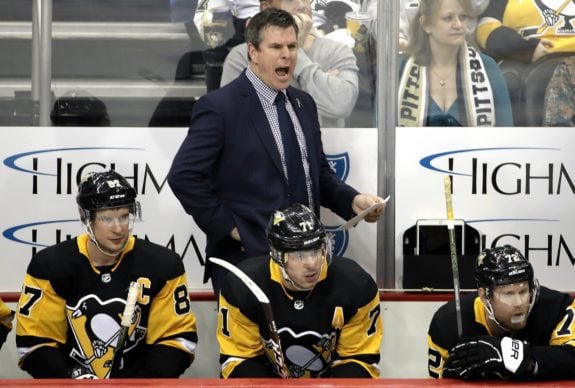
However, could they have another level? The Penguins have picked up their level of play over the last month despite dealing with injuries to some key players, which has become a theme under the guidance of head coach Mike Sullivan. It’s not far fetched to believe that a combination of getting healthy at the right time, an appearance of depth scoring, and elite goaltending could have the Penguins in good shape ahead of the start of the 2019 NHL Playoffs on April 10.
Malkin, Letang Inch Closer to Returns
Injuries have once again impacted the Penguins’ season as Evgeni Malkin, Matt Murray, Kris Letang, Bryan Rust, and Zach Aston-Reese have all required extended stays on the sidelines at one point or another; but they’re finally inching closer to full health with the postseason less than two weeks away.
After getting Olli Maatta back from a 21-game absence on Friday night, Malkin, Letang, Aston-Reese and Chad Ruhwedel are the Penguins who remain on the mend from their injuries. The big ones, of course, are Malkin and Letang, who are two of the team’s three best players. But they also seem the closest to a return.

Say what you will about Malkin’s production cooling off after a hot start to the season, but he’s still one of the best centers in hockey and had been back to his usual self for a few weeks before suffering an upper-body injury on March 16 against the St. Louis Blues.
In 66 games this season, the 32-year-old has 21 goals and 71 points. He recently recorded his 1,000th career point on March 12 against the Capitals. Speaking after practice on Saturday, Malkin said it’d be ideal to see some game action before the end of the season, but added he wouldn’t rush the process.
As far as Letang goes, he’s probably been the Penguins’ MVP this season when healthy. Before suffering two injuries within a month, he’d stayed relatively healthy this season and had been playing at a Norris-caliber level after an inconsistent season in 2017-18 as he returned from neck surgery. In 63 games in 2018-19, Letang has recorded 16 goals and 56 points while averaging 25:55 of ice-time per night.
The Penguins’ record, as well as their on-ice play, has been relatively good despite the absences of Letang and Malkin, but getting them back well rested and at full health is going to make them a better team.
Healing from an injury doesn’t give you the same quality of rest as being healthy scratched for a game does, but with both their injuries being somewhat minor, their absences could still help them avoid fatigue during the postseason; especially Letang, who’ll see a substantial uptick in ice-time in the playoffs.
Even when they’re healthy, there’s still going to be questions that’ll need answered. Which defenseman sits when Letang returns to the lineup, and which forwards sit when Malkin and Aston-Reese return?
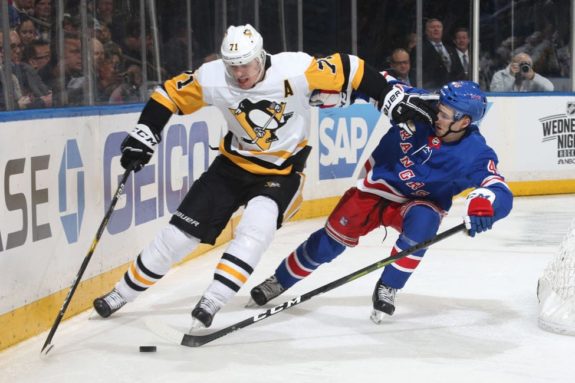
They have to get to that point first, of course. While Malkin and Letang seem close, neither of them appear to be on track to play before Tuesday’s game against the Detroit Red Wings at the earliest. Meanwhile, Aston-Reese has still yet to resume skating, so he’s probably not going to be back until a few games into the postseason.
There can be all the speculation in the world, and there are some obvious suspects who could be removed from the lineup, but it’s moot until the time comes. Regardless of who leaves, it’s going to be a tough decision for the coaching staff. But the opportunity to slot two well-rested star players back into the lineup helps soften the blow.
Rutherford’s February Deal Paying off
The Penguins’ top-level talent has been able to go point-for-point with any team in the league for the better part of the last decade and a half, but their depth scoring has been hit-or-miss in that same span.
When they could roll out all four lines and skate circles around opponents in 2016 and 2017, they won consecutive Stanley Cups. But when they couldn’t buy a goal from their bottom-six at times last season, it resulted in a second-round exit.
It seemed like the same issue was going to persist this season and would lead to another early exit. With 2018 Trade Deadline bust Derick Brassard continuing to be woefully ineffective as the third-line center, general manager Jim Rutherford knew something had to be done to spark the roster.
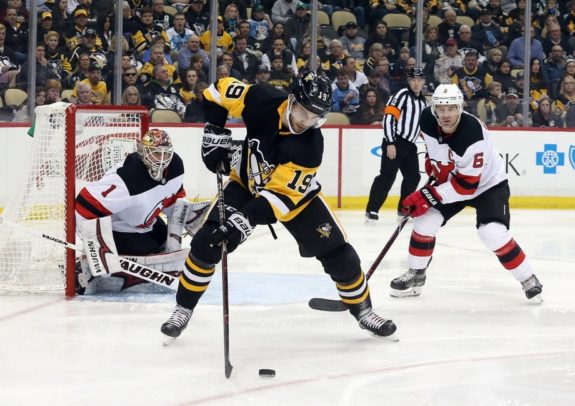
On Feb. 1, the Penguins traded Brassard, center Riley Sheahan and three draft picks to the Florida Panthers in exchange for forwards Nick Bjugstad and Jared McCann. It didn’t seem like much of a blockbuster at first, but the payoff has been tremendous for the Penguins.
In 56 combined games with Pittsburgh, McCann and Bjugstad have combined for 19 goals and 30 points, compared to the 16 goals and 24 points Brassard and Sheahan had in 89 combined games with the team this season. The impact they’ve made has been better than anybody could’ve expected to this point.
Bjugstad has been the player Brassard was expected to be. In 28 games with the club, the 26-year-old has scored eight goals and 12 points. He shuffled around a bit during his first few weeks as a Penguin because of injuries throughout the lineup but has found something that works on the third-line with Dominik Simon and Patric Hornqvist on his wings.
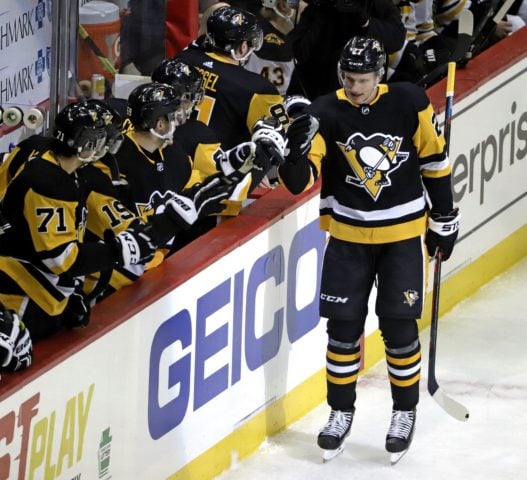
For as much recognition as the duo of Sidney Crosby and Jake Guentzel get, their best line in recent weeks may be the trio of Bjugstad, Simon
In 121 minutes together at five-on-five, the trio has a Corsi for percentage of 60.1, Fenwick for percentage of 61.3, shots for percentage of 60.3, scoring chances for percentage of 60.8, high-danger chances for percentage of 71.1 and goals for percentage of 66.7. Their per
They’ve been a threat whenever they step on the ice and are a good bet to spend a good chunk of time in the offensive zone. This, in turn, has given them favorable per 60s against as their offensive prowess has led to minimal time in their territory. Their Corsi against per 60 of 45, Fenwick against per 60 of 33.1, shots against per 60 of 23.7, scoring chances against Per 60 of 18.8, high-danger chances against per 60 of 5.4 and goals against per 60 of .99 are all better than the Penguins’ team per

While they’ve combined for just four goals, it’s tough to see their on-ice shooting percentage of 5.48 be so low for much longer if they continue to generate the number of shots and scoring chances they have. The law of averages will start working in their favor at some point. Even if it doesn’t, their ability to control the game gives the Penguins’ top guys a chance to take advantage of a worn-down opponent.
For the first time in almost two seasons, the Penguins seem to have a third line that works, and it’s hard to envision Sullivan tinkering with it even when he has a healthy roster at his disposal. Although no player on this line is nearly as good as Phil Kessel, it could be the best third-line the Penguins have put together since the HBK line in the 2016 Playoffs.
While they’re still missing any sign of life from their fourth-line for the most part, the emergence of the Bjugstad, Simon and Hornqvist line would give the Penguins three strong lines heading into the postseason, and it could be enough to get them back over the hump.
As for the other member of the trade, he’s been pretty good, too.
McCann was viewed as the wild card because his youth was intriguing, but he had hadn’t shown many signs of living up to his first-round pedigree during his first three NHL seasons. That’s changed as a member of the Penguins as he’s impressed in each game with the club. In 28 games, he’s scored 11 goals, surpassing his previous career-high of nine goals over a full season. McCann’s also added a team-high three shorthanded goals despite playing in just 36 percent of the Penguins’ games. Overall, in 74 games between the Panthers and Penguins, the 22-year-old has 19 goals and 34 points.
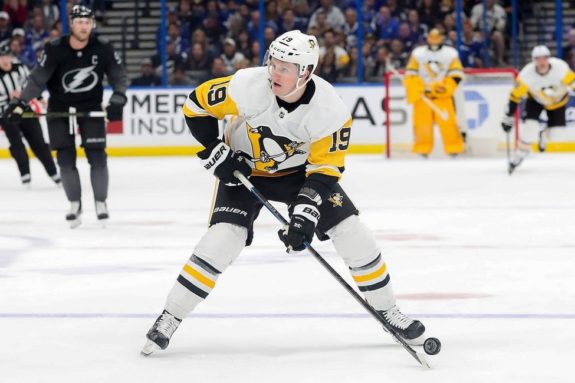
Similar to Rust, McCann’s become a swiss-army knife for the Penguins. Regardless of his position in the lineup, he’s made an
Related: Penguins’ McCann Fitting in Perfectly
McCann’s burst onto the scene as a member of the Penguins may remind many of Carl Hagelin’s first half season and playoff run during the 2015-16 campaign. Hagelin put up 27 points in 37 regular season games and 16 points in 24 games in the playoffs to help the Penguins win the Stanley Cup. Outside of McCann having much, much more offensive upside, it’s a pretty good comparison to have in mind.
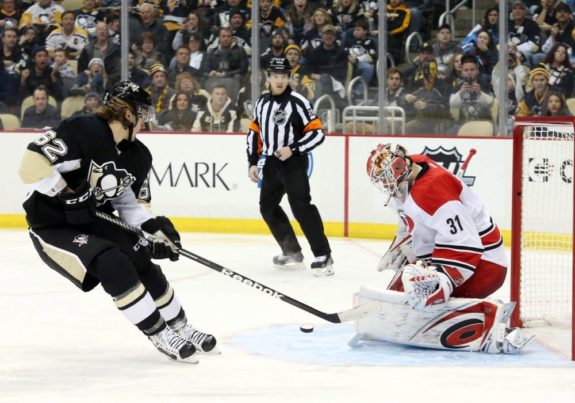
Having as many top-tier players as the Penguins do is helpful, but they can’t do it all. It’s why it was so crucial for Rutherford to hit on his fix to the Brassard trade, and he did. The acquisition of just two players has helped fix a few of, though not all, the areas the Penguins lacked in, and it could help them in the coming weeks.
Goaltending Is a Strength Once Again
Back at the quarter mark of the season, the Penguins had a .906 team save percentage (SV%), which was league-average at the time — it’s .905 now.
In seasons past, it likely would’ve been all the team would need to win games. But the team in front of the goalies wasn’t consistent enough for league-average goaltending to get the job done. They needed their goaltending to become the X-factor if they were going to start piling up the wins.
The Penguins’ goaltending has done just that over the last four-plus months. Over their last 56 games, they’ve posted a team SV% of .915 to bring their season average up to .912, including empty nets. Without it, their team SV%
A big reason for their turnaround has been the play of Murray, who’s looked like a completely different goalie since returning from injury on Dec. 15 against the Los Angeles Kings. In 35 games since his return, Murray has gone 23-8-4 with a .930 SV%, a 2.35 goals-against average (GAA) and three shutouts to bring his season totals to 27-13-5 with a .918 SV%, a 2.73 GAA and four shutouts in 46 games.
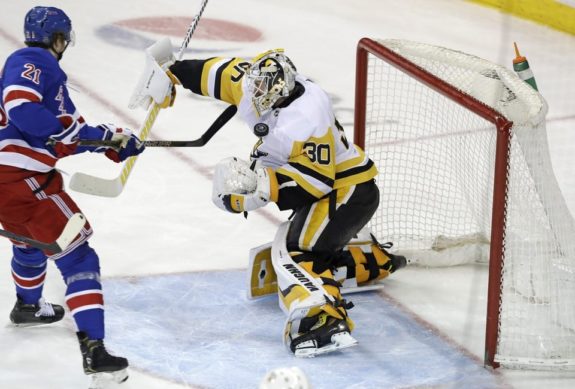
The difference between his early season and post-injury play is staggering. It’s clear he wasn’t healthy to begin the season. His confidence is back. He’s tracking pucks much better, getting into position, making timely saves, and keeping his team in every game even when they’re struggling to get it going offensively.
He looks like the Murray who won two Stanley Cups before losing his rookie eligibility, which is good news for a team that may be looking at a ton of low-scoring games in a likely first-round series against the Islanders; who’ve received elite goaltending of their own.
What shouldn’t be lost in Murray’s play is the fact that Casey DeSmith’s early-season play has made this stretch meaningful. There’s a real possibility the Penguins would’ve been sunk before the New Year had the 27-year-old not posted a 10-5-4 record with a .923 SV% and two shutouts in 22 games from Oct. 11 to Dec. 14 while Murray struggled with injuries and poor play.
Of course, this all means nothing if they implode in the first round and lose in five games, which would be about as surprising as it’d be to see them win it all. While the Penguins are still among the league’s elite teams, they’re far from perfect. They’re likely behind the Capitals, Boston Bruins and Tampa Bay Lightning when it comes to favorites to win the East, but it’s anybody’s Stanley Cup to lose, and the Penguins, outside of some hiccups, have put their names in the hat this spring.